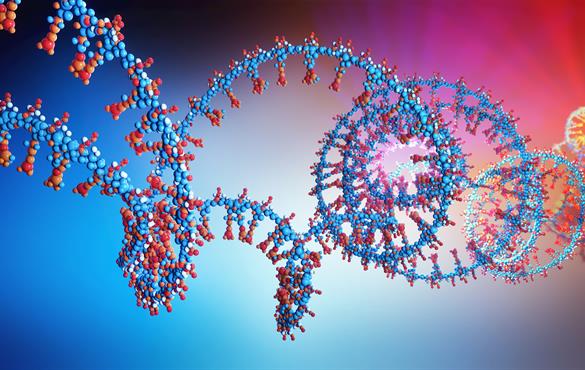Big data analysis leads to discovery of new class of RNA
Weixiong Zhang and members of his lab have found a missing piece in the study of circular RNA

In the past several years, circular RNA, a type of RNA formed by fusion of the two ends of a linear RNA, has been recognized to play roles in cell development and in various types of cancer and neurodegenerative diseases. A computer scientist in the McKelvey School of Engineering at Washington University in St. Louis has found a new class of circular RNA, which could shed light on some of these diseases.
Weixiong Zhang, professor of computer science & engineering and professor of genetics at the School of Medicine, along with his doctoral student Xiaoxin Liu, discovered and studied a new class of these circular RNAs, or circRNAs, by analyzing enormous amounts of genetic data from humans, mice and rice. After having biologists at Jianghan University in China validate their computational results, they reported their findings in RNA Biology, published online Sept. 27, 2019.
In their analysis, Zhang and his collaborators found a new class of circRNAs that circulate at the positions inside of exons, introns and RNA sequences from the genomic regions between genes and called them interior circRNAs. These interior circRNAs are abundant in humans, mice and rice. In HeLa cells, the oldest and most commonly used human cell line, 92.2% of the total circRNAs are interior circRNAs; in the human brain, 43.2% are interior circRNAs; in the mouse brain, 84.3% are interior circRNAs; and in rice roots, 96.6% are interior circRNAs.
"We developed an algorithm and a program to systematically look for joining points in circular RNAs," Zhang said. "Our new method is purely a data-driven approach that does not rely on information of gene annotation or RNA splicing signals and is able to identify candidate circRNAs regardless of their genomic origins."
Zhang's work investigating the novel ways that these interior circRNAs are created, which led to new hypotheses of splicing independent biogenesis of circRNA production, opens a new way to understand circRNAs. He plans to continue studying classes of circular RNA and what roles they may have in cancer and neurodegenerative diseases.
"This is a big missing piece in the study of circular RNA," Zhang said.
Liu X, Hu Z, Zhou J, Tian C, Tian G, He M, Gao L, Chen L, Li T, Peng H, Zhang W. Interior circular RNA. RNA Biology, https://doi.org/10.1080/15476286.2019.1669391.
Funding for this work was provided by the National Institutes of Health (R01 GM100364) and the National Natural Science Foundation of China.



